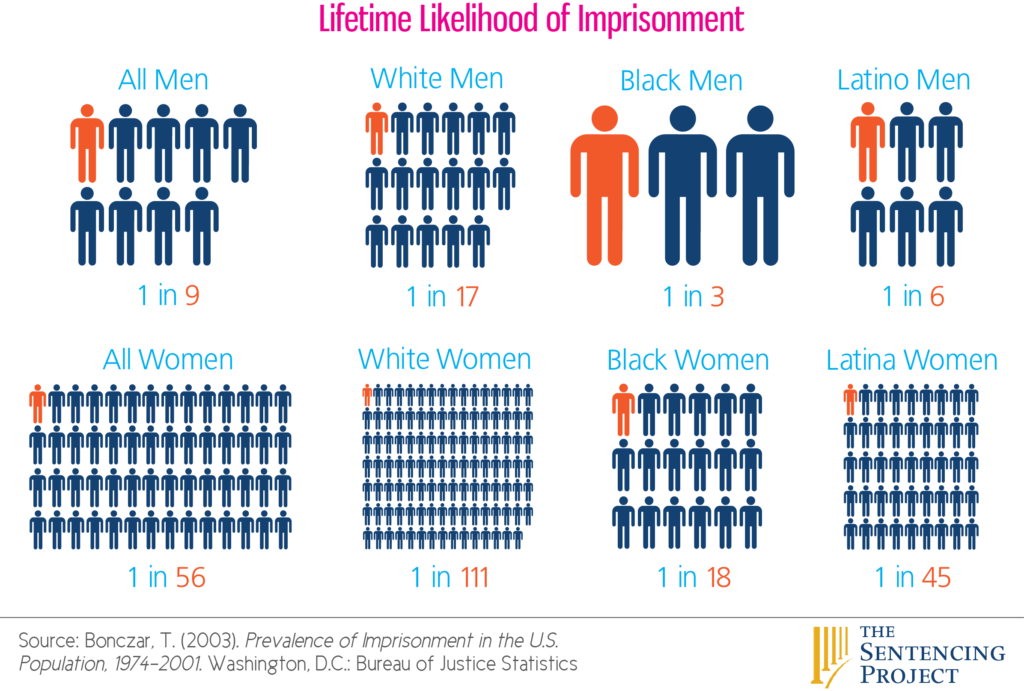In 2003, Congress passed the Prison Rape Elimination Act (PREA), the nation’s first-ever law addressing sexual abuse in detention facilities. In 2012, the Department of Justice published national standards to address the issue of sexual abuse and harassment in confinement.
The Bureau of Justice Statistics determined that over 7% of prisoners have been sexually abused during their most recent incarceration. Approximately half of those assaults occurred at the hands of staff and most survivors report repeat victimization during their incarceration.
PREA standards have three clear goals: to prevent, detect and respond to sexual abuse in confinement. The standards address inmate on inmate as well as staff on inmate sexual abuse and harassment. The standards meet the goals by adopting a zero-tolerance policy within institutions, identify hiring and training requirements for facilities, and developing procedures for responding to reported abuse. Inmates are provided education about the dynamics of sexual abuse in confinement and what their rights are if victimized. The standards identify multiple ways an inmate, community member or staff can report suspected abuse. Additionally, the standards address allowing outside advocacy and support for survivors.
When addressing the problem of sexual assault in confinement, it is important to be aware of the prevalence of the racial disparities within our criminal justice system and to be able to identify those who are most likely to become a victim of sexual assault in prison (young offenders, those perceived to be weak/less likely to report or fight back, LGBTIQ, mentally ill and those with a prior history of trauma).
PREA standards not only help ensure the safety and security of inmates, staff and the institution, but also provide support for victims, most of whom are ultimately returned to society. Victims of sexual assault in confinement suffer the same trauma as individuals assaulted in the community, however, due to the unique dynamics of a prison/jail setting, historically have not have the same access to reporting, resources and support. The Prison Rape Elimination Act helps identify and address these deficits.
Resources
PREA Advocacy Manual: Tools for Advocates Working with Incarcerated Victims of Sexual Violence in Wisconsin (2017): The first half of this tool is intended to provide information on the background, prevalence, and dynamics of sexual abuse and sexual harassment (including abuse and harassment perpetrated by a staff member) in correctional institutions, as well as incarcerated victim responses. The second half of this tool is designed to provide best practice guidelines for advocates who are providing services to incarcerated victims of sexual violence within correctional institutions. While many of the tools, guidelines, and suggestions depict working with prison rape survivors, these same or similar methods are valuable when working with survivors of sexual assault in all forms of detention.
Webinars
- Addressing Implicit Bias to Better Serve Incarcerated People (part 3 of the 2018 PREA Webinar Series: An Intersectional Approach) (WCASA, 2018) - Presented by Madison Police Department’s Judgement Under the Radar, featuring Officers Marcus Robbins, Tyrone Cratic Williams and Natalie Deibel, and Vicki Biehn and Annabell Bustillos from Sexual Assault Services of Lutheran Social Services in Racine County. Part 3 of 3 of the 2018 PREA Webinar Series...What is implicit bias, and why is it of particular importance when serving incarcerated people? Judgement Under the Radar begins with this discussion, including an explanation of the criminal justice system, traumas that may be experienced as a part of that system, and strategies to reduce bias when serving incarcerated victims. Sexual Assault Services of LSS then presents in detail about their work with incarcerated individuals, including initial anxieties, joys of this work, and lessons learned.
- Prison Rape Elimination Act: Advocacy in Confinement Part 2 (WCASA, 2018) - In this webinar paricipants will learn best practices for serving incarcerated survivors; view the inmate rights video; and discuss challenging scenarios advocates may encounter while providing services to incarcerated survivors.
- Prison Rape Elimination Act: Advocacy in Confinement (WCASA, 2016) - The Prison Rape Elimination Act of 2003 sets forth standards to prevent, detect and respond to sexual abuse and sexual harassment in confinement. As in the community, advocacy in confinement is central to the healing process. Join us to learn about the dynamics of sexual abuse, the role of advocacy and the ways in which we can work together to support survivors in confinement.
State Resources
- Tools for Advocates Working with Incarcerated Victims of Sexual Violence in Wisconsin
- WI Department of Corrections-PREA Unit: To contact the WI DOC PREA office, learn more about PREA standards, view PREA audit results or report sexual abuse/harassment
National Resources
- PREA Resource Center: Provides assistance to those responsible for state and local adult prisons and jails, juvenile facilities, community corrections, lockups, tribal organizations, and inmates and their families in their efforts to eliminate sexual abuse in confinement.
- Just Detention International: A health and human rights organization that seeks to end sexual abuse in all forms of detention - Hope Behind Bars; An Advocates Guide to Helping Survivors of Sexual Abuse in Detention
- The Sentencing Project: Organization working for a fair and effective criminal justice system. Site includes research publications, media campaigns, and strategic advocacy for policy reform.
- The Sexual Abuse to Prison Pipeline: The Girls' Story : A report focusing on how many girls who experience sexual abuse – especially girls of color – are routed into the juvenile justice system because of their victimization.

